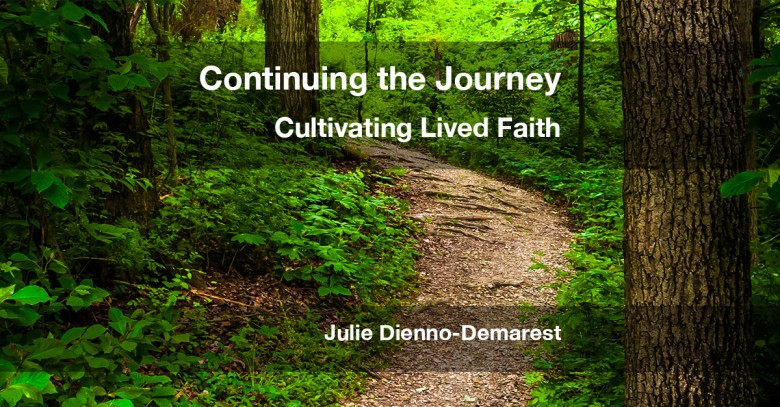Give Some Love
You know how timing is everything?
One night last week I was working on Sacrament prep with my younger son, Max. The lesson, “God Loves Us,” asked him to identify some of the ways different people in his life help and love him. Then, it asked him to identify some of the ways he offers help and love to others. It was a good, simple 2nd Grade exercise, but it didn’t make that explicit connection back to the lesson title. So we talked about it:
Max scrunched up his face as he thought for a moment, and then smiled and said, “Well, I didn’t know it, but it makes a lot of sense.”
It turns out that our Sacrament prep conversation occurred on the evening of St. Teresa of Avila’s Feast Day. The prayer attributed to St. Teresa, “Christ Has No Body But Yours,” touches upon this theme of God relying upon us to help and love others.
No hands, no feet on earth but yours,
Yours are the eyes with which he looks
Compassion on this world,
Yours are the feet with which he walks to do good,
Yours are the hands, with which he blesses all the world.
Yours are the hands, yours are the feet,
Yours are the eyes, you are his body.
Christ has no body now but yours,
No hands, no feet on earth but yours,
Yours are the eyes with which he looks
compassion on this world.
Christ has no body now on earth but yours.
Making that connection between the idea of God’s love for us and our role in making that happen is important at any age.
Fast forward a couple of hours, and later that night, instead of making the kids’ lunches, I sat on the floor of my office and packed up 70 copies of Continuing the Journey to ship out to 35 different parishes in the Houston area. (Yay book sales!) So I went to bed promising to do lunches in the morning, even though I know that’s never a good idea. When I awoke with a viscous head cold, I decided to sleep in a little later, drop the kids at school, and then make and deliver those lunches by 11:30. Plenty of time!
Except before I went over to school, I stopped at the Post Office. Turns out it takes a lot longer to mail 35 packages than I expected. Turns out that I really should have either pre-paid or made an appointment.
All this to say that I was a little late in delivering the lunches… so late that I needed to walk them up to the boys’ classroom. When I entered, I saw that my 8 year old son, Alex was sitting next to his teacher (never a good sign), who tells me, “We’re working on calming down.”
I take one look at Alex’s face and see the swollen, puffy red splotches around his eyes. It was one of those “one-too-many-things-went-wrong” situations, but all he could focus on was this little plastic shoe lace lock thing that broke.
A very sad, but relieved “Yeah…” came out.
“Actually, Alex, would you want to come with me?” (I look at his teacher and she nods in agreement.) “You could eat your lunch in the car, take some time to calm down, and you can come back to school later.”
“Okay.” And he put his little hand in mine as we walked out.
We have an expression in our male-dominated, engineer-brain, intense-personality house, which is simply “I need some love.” Whether a person is sad or frustrated or feeling down or lonely or simply feeling cuddley, “I need some love“ is a request that is always honored. It’s a stop-what-you’re-doing and be fully present to a full-body hug. Thus far it has also involved the boys crawling into my lap. This expression gets adapted to question form: “Do you need some love?” as well as a statement that accompanies a bear hug: “I just want to give you some love.”
So as we walked out of the school building towards the car, I picked him up into a bear hug so I could give him some love. We got into the car and pulled out of the parking lot.
This made him cry even more, so I pulled the car over, he climbed into the front seat, and I just gave him some more love.
Alex is not the most verbally expressive kid, so I only got a few garbled pieces in a very high pitched voice, but one tidbit stood out. When he had started to get emotional at school, one of the younger children in their mixed aged class called Alex a cry-baby, and then denied doing so when confronted. Alex was most upset by the injustice of it all: Together, the students had created, agreed to, and and signed a Class Constitution that explicitly stated they are to show compassion to one another (not make fun of each other).
He was too upset to talk about it any more, so I gave some love and we went about running errands, fixing shoe lace locks, and stopping by a Starbucks to pick up a kid-hot-chocolate (which is a super-small serving at a kid-friendly “warm-chocolate” temperature).
Later in the afternoon, I told him about why I was so late to drop off the lunches–it took a lot longer to mail 35 packages than I thought. But instead of the Post Office being a thorn, it turned out to be my rose. If it wasn’t for this unexpected delay, I wouldn’t have been so late in dropping off the lunches that I needed to walk into his classroom at that moment and see him. I wouldn’t have been there at exactly the right moment to give some love.
That’s how God works. When someone is upset or in need of help (or could just use some love), God tugs at your heart and asks you to help. You have three choices:
- You can ignore it, which kinda hurts God’s feelings.
- You can be mean to the person, which really hurts God’s feelings.
- Or you can give love, which really helps God out.
And that’s the thing that’s so upsetting about [your younger classmate]. He saw that you were upset and instead of offering love or compassion, he chose to be hurtful.
I hope that the next time you see someone who is upset, you’ll remember how important it is to offer love.”
The reality is that this dynamic of giving and needing love presents itself to us every day. Sometimes it’s obvious: your child is visibly upset and you have a unique opportunity to respond. Sometimes it’s more subtle: a friend crosses your mind while you shower and you find yourself suddenly filled with gratitude for their presence in your life.
It’s at these times–both the obvious and the subtle–that God is tugging on our hearts and asking us to help Him shower His people with love.
- How do we respond to this tug? By ignoring it? By lashing out against it? Or by offering love?
Free hugs by Hien Nguyen licensed under CC BY-NC-SA 2.0




 Special Pricing is available for bulk orders of 10+ or 25+ on my
Special Pricing is available for bulk orders of 10+ or 25+ on my 



